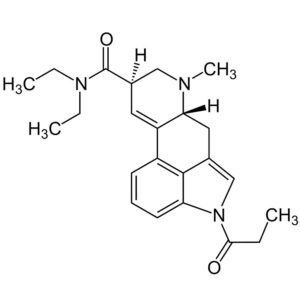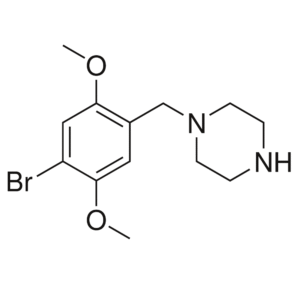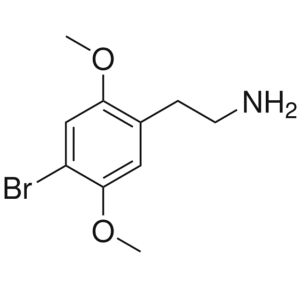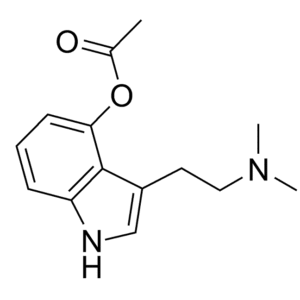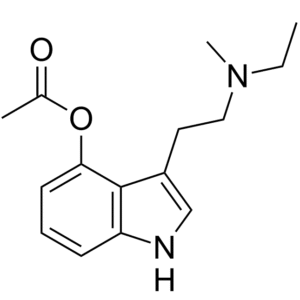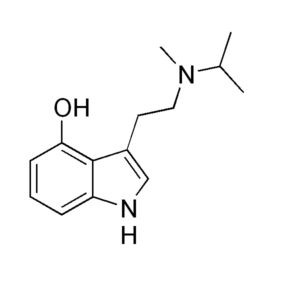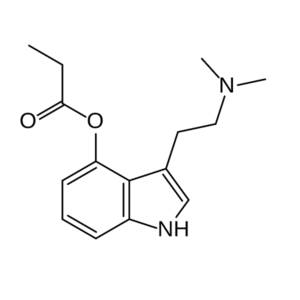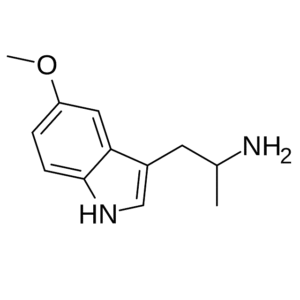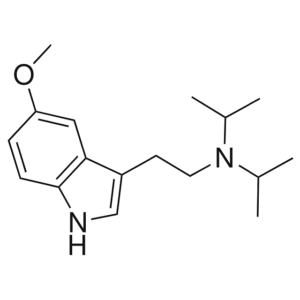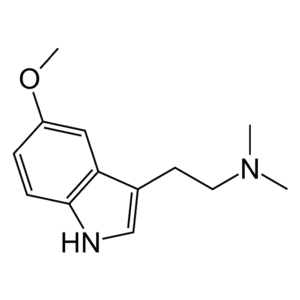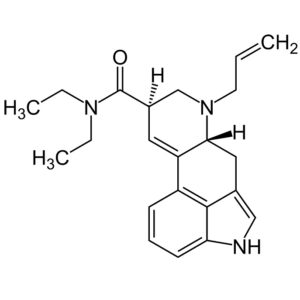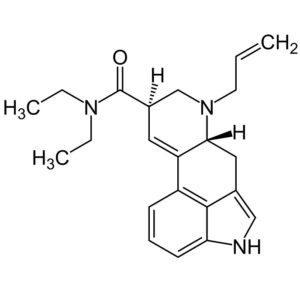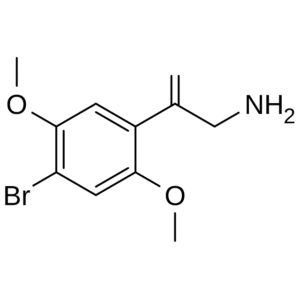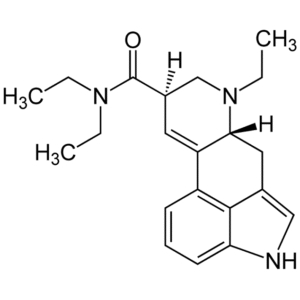Psychedelics
Legal Lysergamides/Phenethylamines/Tryptamines
Legal lysergamides are synthetic or semi-synthetic compounds derived from the ergoline structure that comply with local and international regulatory frameworks. Researchers study these compounds for their psychoactive and therapeutic potential while ensuring compliance with legal standards. Legal lysergamides offer a controlled platform for investigating effects on serotonin receptors, cognitive processing, and perception modulation. By focusing on compounds that are legally permissible, laboratories can conduct experiments without regulatory risk, enabling detailed studies on receptor binding, pharmacokinetics, and neurochemical mechanisms. Understanding legal lysergamides is crucial for advancing research in neuropharmacology and psychopharmacology while maintaining ethical and legal compliance.
Research Applications of Legal Lysergamides
The use of legal lysergamides in scientific research encompasses studies on mood regulation, neural plasticity, and cognitive enhancement. Researchers analyze how these compounds interact with serotonin receptors and influence neural circuits associated with perception and consciousness. Studies also explore potential therapeutic applications in conditions such as depression, anxiety, and cluster headaches. Legal lysergamides provide a foundation for developing new experimental models, testing hypotheses about neurochemical signaling, and evaluating safety and efficacy profiles in controlled laboratory environments.
Exploring Phenethylamines Psychedelics
Phenethylamines psychedelics are a diverse class of compounds that interact with serotonin receptors to produce a range of psychoactive effects. These compounds, often studied alongside tryptamines, are valued in research for their ability to modulate perception, mood, and cognition. Researchers investigate phenethylamines psychedelics to understand receptor binding affinities, dose-response relationships, and the mechanisms underlying altered consciousness. By examining both natural and synthetic phenethylamines, scientists can explore structure-activity relationships and identify compounds with potential therapeutic applications in neuropharmacology and experimental psychiatry.
Pharmacological Comparison of Phenethylamines and Tryptamines
Phenethylamines and tryptamines differ in their chemical structure, receptor selectivity, and resulting psychoactive effects. Phenethylamines typically feature a benzene ring attached to an ethylamine chain, while tryptamines have an indole structure that resembles serotonin. Comparative studies of these compounds allow researchers to analyze differences in potency, duration, and subjective effects. Understanding the nuances between phenethylamines and tryptamines aids in predicting pharmacokinetic behavior, potential side effects, and the design of new molecules for experimental or therapeutic use. These insights are essential for advancing the field of psychedelic research and neuropharmacology.
Tryptamines vs tryptophan are often compared in research to understand their structural similarities and functional differences in the body. Tryptophan is an essential amino acid that serves as a precursor for serotonin and other bioactive compounds, while tryptamines are structurally derived from tryptophan and can act as potent psychoactive agents. By studying tryptamines vs tryptophan, researchers can investigate how slight chemical modifications influence receptor interactions, neurotransmitter activity, and neurological effects. These comparative studies are vital for understanding metabolic pathways, receptor selectivity, and the psychoactive properties of tryptamine-based compounds.
Research Applications of Tryptamines Legality in the US
Tryptamines legal encompass a range of compounds that comply with current regulations and can be used in controlled scientific studies. These legal tryptamines allow researchers to explore pharmacology, receptor activity, and potential therapeutic applications without violating regulatory frameworks. Laboratories study legal tryptamines to assess psychoactive effects, interactions with serotonin receptors, and cognitive outcomes in experimental models. Research on tryptamines legal also includes safety assessments, dosing studies, and comparative analyses with other psychoactive compounds, providing critical data for neuropharmacology and psychopharmacology investigations.
Psychedelics for Depression and Anxiety; And Mental Health
For decades, traditional treatments like antidepressants and talk therapy have been the standard approach to mental health. However, an increasing body of scientific research and real-world experiences is revealing something groundbreaking: psychedelics for depression and anxiety may offer transformative healing for those who haven’t found relief through conventional methods.
This page explores how psychedelics are being studied, applied, and experienced in the fields of mental health, PTSD, and trauma recovery—particularly among veterans—while offering insights into the future of this emerging therapy.
Interested in Psychedelics for Mental Health?
In recent years, clinical studies from institutions such as Johns Hopkins, MAPS, and Imperial College London have demonstrated the potential of psychedelics—such as psilocybin, MDMA, and ketamine—to help patients manage conditions that previously seemed resistant to treatment.
Unlike standard medications that often mask symptoms, psychedelics interact directly with serotonin receptors in the brain, creating conditions for deep emotional release, neuroplasticity, and long-term mental clarity. This has sparked global interest in psychedelics for mental health, positioning them as one of the most promising frontiers in psychiatric care.
Psychedelics for Depression and Anxiety; Breaking through Treatment Resistance
Millions of people struggle with depression and anxiety disorders worldwide, and for many, conventional prescriptions do not bring adequate relief. Psychedelics—particularly psilocybin—have been shown to reduce depressive symptoms in clinical settings, sometimes after just a single guided session.
Studies suggest that psilocybin helps “reset” key brain networks that are overactive in depression and anxiety, allowing patients to gain new perspectives, emotional resilience, and lasting relief.
Emotional Healing Beyond Medication
Patients often describe psychedelic experiences as profoundly meaningful, offering deep emotional insights that extend far beyond the scope of traditional treatment. For those living with anxiety disorders, psychedelics may help ease fear responses and restore a sense of peace.
Psychedelics for PTSD; A Breakthrough in Trauma Treatment
Post-traumatic stress disorder (PTSD) has long been one of the most challenging conditions to treat, particularly in those who have endured severe trauma. Standard therapies like talk therapy and SSRIs often only scratch the surface of PTSD’s deeply rooted impact.
However, recent clinical trials using psychedelics for PTSD, especially MDMA-assisted therapy, have shown remarkable results. Patients often report experiencing a new sense of safety, emotional connection, and relief from intrusive memories after carefully guided sessions.
How Psychedelics Rewire Trauma Responses
MDMA and psilocybin work by temporarily reducing activity in the amygdala—the brain’s fear center—while enhancing connectivity in regions tied to trust, empathy, and memory processing. This unique combination allows patients to revisit traumatic memories without being overwhelmed, opening the door to profound healing.
Psychedelics for Veterans; Addressing the Mental Health Crisis in Veterans
Veterans face disproportionately high rates of depression, anxiety, and PTSD. Traditional treatments often fall short, leaving many without lasting solutions. As a result, there has been growing advocacy for the use of psychedelics for veterans struggling with trauma and reintegration.
Veteran Success Stories
From ayahuasca retreats to clinical MDMA trials, countless veterans have shared stories of life-changing recovery after psychedelic therapy. Many describe finding renewed purpose, freedom from intrusive thoughts, and the ability to reconnect with loved ones—something conventional medicine had failed to provide.
Policy and Access
As awareness grows, advocacy groups and nonprofit organizations are working to make psychedelic therapy more accessible to veterans. With policy reforms under discussion in several countries and states, the pathway to safe, regulated access is becoming more realistic.
The Future of Psychedelics in Mental Health
The evidence is clear: psychedelics are no longer fringe topics but are rapidly entering mainstream discussions in medicine and public policy. While challenges remain—such as legal restrictions, standardization, and ensuring safe therapeutic settings—the momentum is undeniable.
With more clinical trials underway and increased recognition from healthcare providers, psychedelics may soon play a central role in how we approach mental health, trauma, and healing.
Explore the Power of Psychedelics like Lysergamides, Phenethylamines, Tryptamines
The journey toward healing is deeply personal, and for many, traditional approaches simply haven’t been enough. Whether you’re exploring the potential of psychedelics for depression and anxiety, seeking new hope for PTSD, or learning about solutions tailored to veterans, psychedelics represent a powerful and promising avenue for change.
Showing all 15 results

